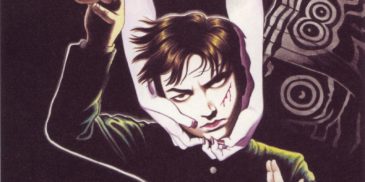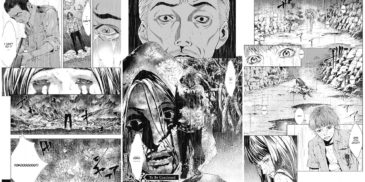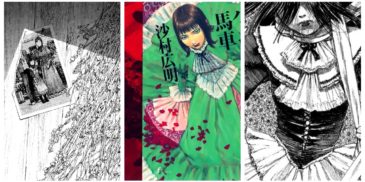
Junji Itō is easily the most prolific horror mangaka in English translation. Viz Media has made a concerted effort to bring as much of his work to the west as possible, with Kodansha and Vertical Comics licensing the few titles Viz missed. There is certainly a valid argument to be made that the popularity of Japan’s body horror master should have opened the doors more widely for similar mangaka; Kazuo Umezz (one of the major influences on Itō) and Shintaro Kago, among others, have also seen English translations, though nowhere near as many as Itō. Still, the care taken with Viz Media’s gorgeous hardcover releases of Itō’s work can only be a good thing. While most well-known for his iconic, twisted imagery, Itō’s writing is always strong, and his themes consistently compelling. One of his most recent efforts, Sensor, tackles obsession and cults, and explores society through a cosmic horror lens.
When Kyoko Byakuya wanders into the shadow of Mount Sengoku, she meets a stranger who knows her name. He takes her to the lost village of Kiyokami, where she becomes embroiled in the residents’ quest to learn the secrets of the universe and commune with their messiah. However, what they discover in the far reaches of the universe is far greater and more horrifying than they ever imagined. Kyoko goes missing after the tragic events in the village, and reporter Wataru Tsuchiyado decides to track her down. From telepathy to time travel, cults to suicidal insects, Itō’s latest runs the gamut of horror – bizarre and grounded, folk and psychological – all tied together with his artwork’s gruesome bow.
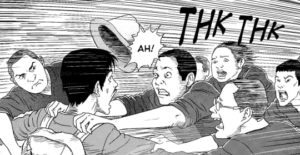
Like Remina and Tomie before it, Sensor once again places a female character at the centre of male obsession. In Tomie, the titular succubus is brutally murdered over and over by men who lose control and blame her for it, while in Remina, a young girl thrust into the spotlight against her will experiences the toxic attentions of her male fans, one of whom eventually attempts to r*pe her. Here, after Kyoko survives a volcanic eruption that wipes out the village of Kiyokami, she becomes a point of obsession for multiple men: Yukio Kurodera, who uses his position of power as a therapist to abuse her; Kagero Aido, a cult leader who believes he can use Kyoko’s heightened senses to reach enlightenment; and Wataru, the book’s “no-name reporter” protagonist, who wants to use Kyoko’s story for fame and fortune. While this latter may not seem as egregious as the others, it further represents how easily men take advantage of women and attempt to justify it. In the book’s afterword, Itō states that neither Kyoko nor Wataru developed in the way he had originally intended. Wataru, for example, “rebelled against [him] and became quite passionate about Kyoko”. It is interesting that, even when he tries to take his characters down different paths, Itō continues to present similar ideas and themes. Rather than feeling repetitive, there is a sense of familiarity and consistency to Itō’s work; we know what to expect with his writing, just as we do with his art.
Sensor contains some of the most striking and discomfiting images in any of Itō’s books. Itō is a master of pacing, and he builds tension that we are personally forced to break with a turn of the page; we as readers are tasked with revealing whatever horror lies ahead. This interactivity is something that Itō has all but perfected, and it is on masterful display in Sensor. For example, the devotees of the Christian missionary Miguel, murdered by the shogunate along with his followers hundreds of years ago, still reside in the village of Kiyokami, awaiting Kyoko’s arrival. Through her, they make contact with someone they believe to be Miguel, but as the figure slowly approaches the cosmos, we know it is too good to be true. This full-page reveal in the first chapter is mirrored in the last: at first dark and enigmatic, and later explicitly horrifying. The second reveal recalls the iconic unveiling of the titular Invisible Man in Universal’s classic film, but of course, with Junji Itō, there could never be anything beneath the bandages. Otherworldly monsters and disfigurements are a staple of Itō’s work, and he is endlessly inventive.
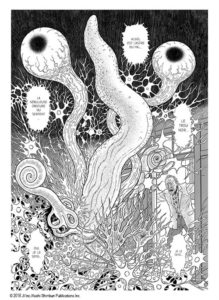
As with many of Itō’s books, Sensor has an episodic narrative. The previous book, Remina, had a much stronger narrative throughline, and one could argue that Sensor would have benefited from that. Itō himself admits that he had originally intended to write a travelogue of sorts, at first with Kyoko as the protagonist, but later changing his mind. Travelogue of the Succubus, as it was originally titled, refused to be contained by his “rough structure”. As such, chapters like ‘Angel Hair’, ‘Battle at Bishagaura’ and ‘Traffic Mirror’ could easily survive as standalones, with ‘Battle…’ being arguably the strongest chapter in the book. In this sense, the book’s structure falters. While the imagery and story remain compelling, the middle chapters struggle to justify their existence in the overarching narrative. However, they are not unwelcome additions to Kyoko’s story, and the book’s denouement lands powerfully despite them.
Sensor is a wonderful addition to Itō’s library. It stands alongside Remina as another fascinating exploration of obsession, using his delightfully twisted art to exaggerate the theme to great effect. This 2021 Viz Media release was edited by Masumi Washington, translated and adapted by Jocelyne Allen, with touch-up art and lettering by Eric Erbes, and a cover and graphic design from Adam Grano. As always, Viz’s team has created a beautiful release, and with Deserter and Liminal Zone forthcoming in 2022, we can be certain their great work on Junji Itō’s manga will continue.
More Manga Reviews
Konnichiwa! Howdy! Dia Duit! If a gruesomely drawn extremity horror with sick fan service based on a Creepypasta style urban legend with a deranged Gothic Lolita as the lead is… The Laughing Vampire, or Warau Kyuuketsuki in Japanese, is a shocking two volume series of the Suehiro Maruo and follows the vampire of Rakuda as she first emerges from parallel… There is a strong style of horror that uses whatever we take for granted as safe in life and turns it into a nightmare. However, once I started to read… Siren, or Forbidden Siren in PAL areas, is a horror video game series in a Japanese style, created by Keiichiro Toyama (also known for the games Silent Hill 1 and… Ero-guro manga is often known for telling stories in the bleakest way possible. Among all the blood, violence, and adult content, it is hard to find any hope for the… Whenever Mako Higari comes in contact with something she perceives as dirty, she gets a massive nosebleed. Brought on by severe childhood trauma from her mother’s distrust of men and…Ibitsu: Creepypasta Style Urban Legend With a Deranged Gothic Lolita
The Laughing Vampire Review – The Fringes of Japanese Horror Manga
Blood in the Tracks Manga Review (2017) : Mommy’s Killer Love
Siren Rebirth Manga Review – Volume 3 & 4
Bradherley’s Coach (2005) Manga Review: Where Dreams Go to Die
Drip Drip (2022) Manga Review – Eruptive Erotic Sanguination
Isabelle is a writer from the UK who enjoys alternative manga and horror films. When not writing, you can probably find Isabelle buying books or obsessing over Martin and Lewis.

